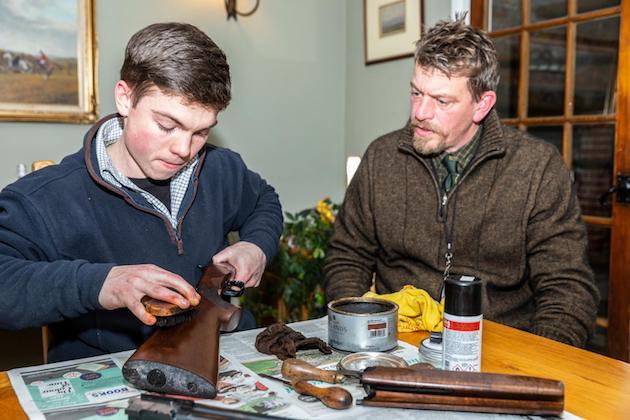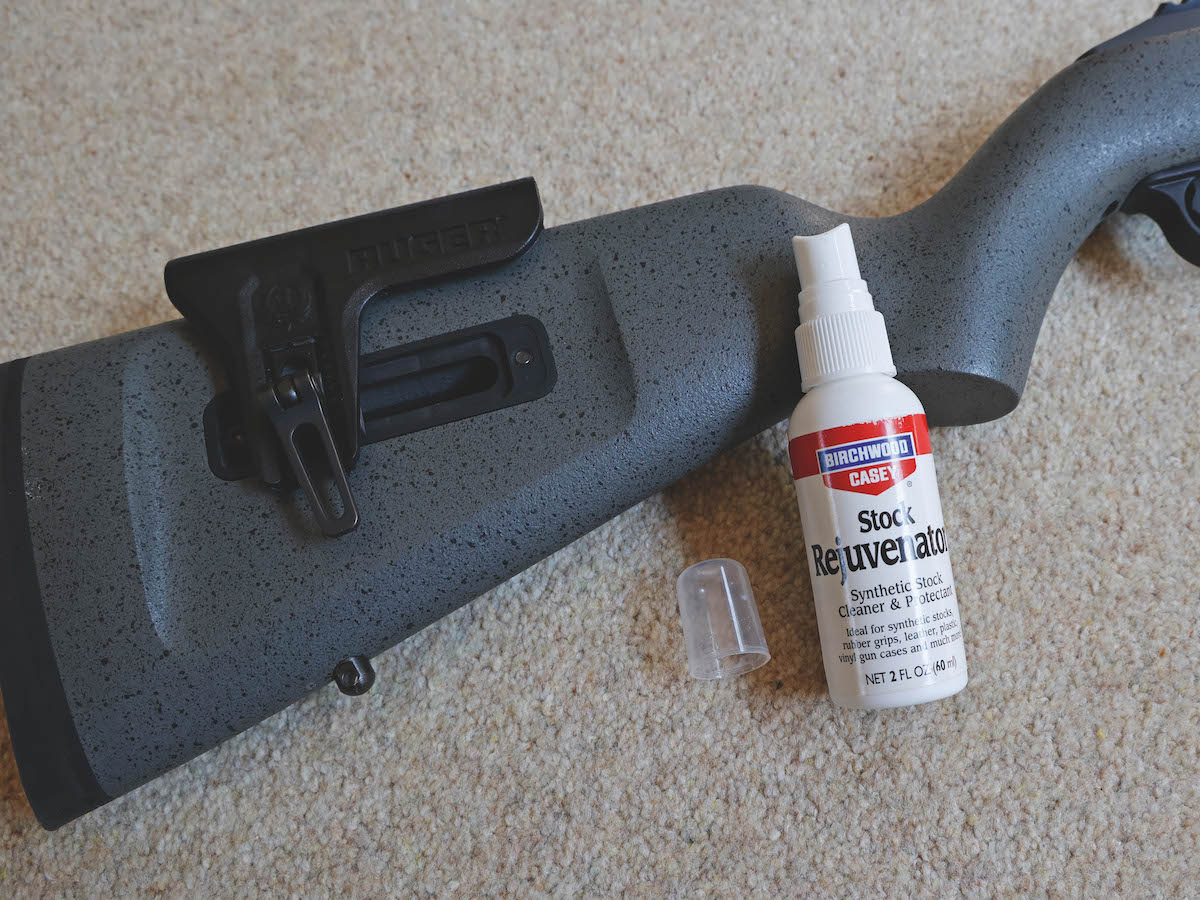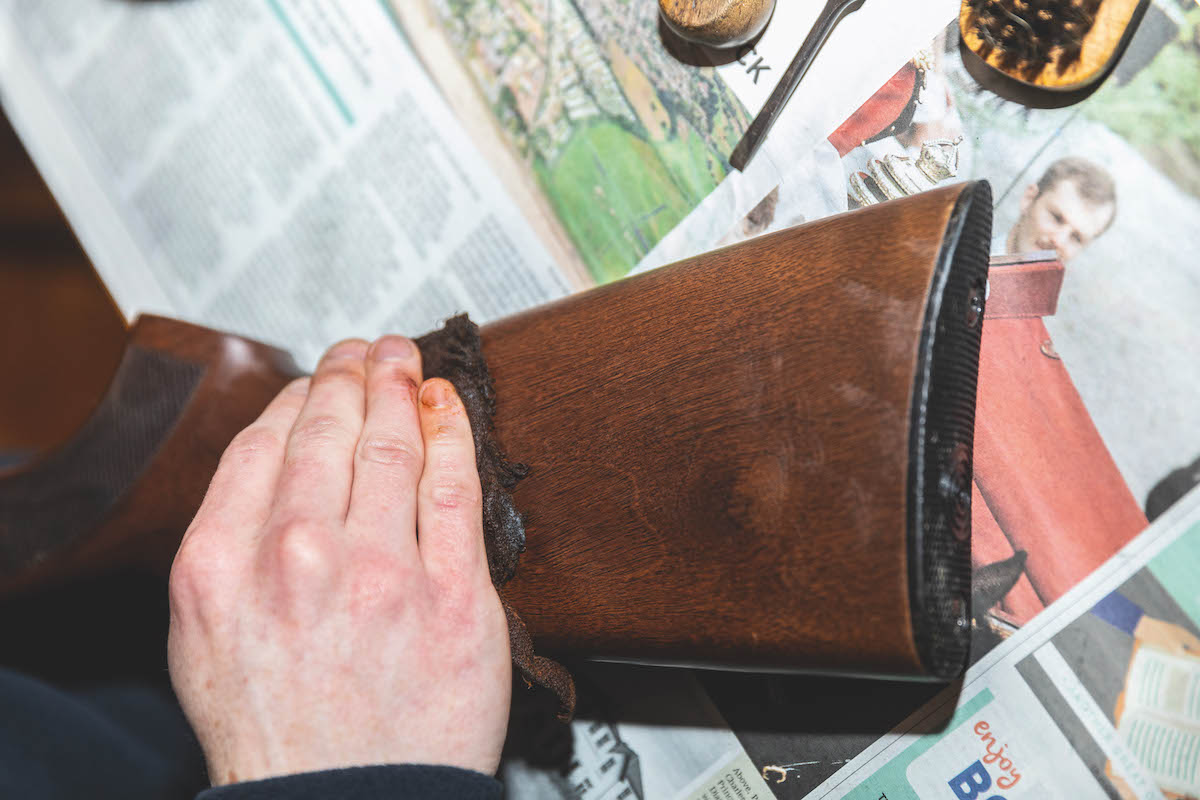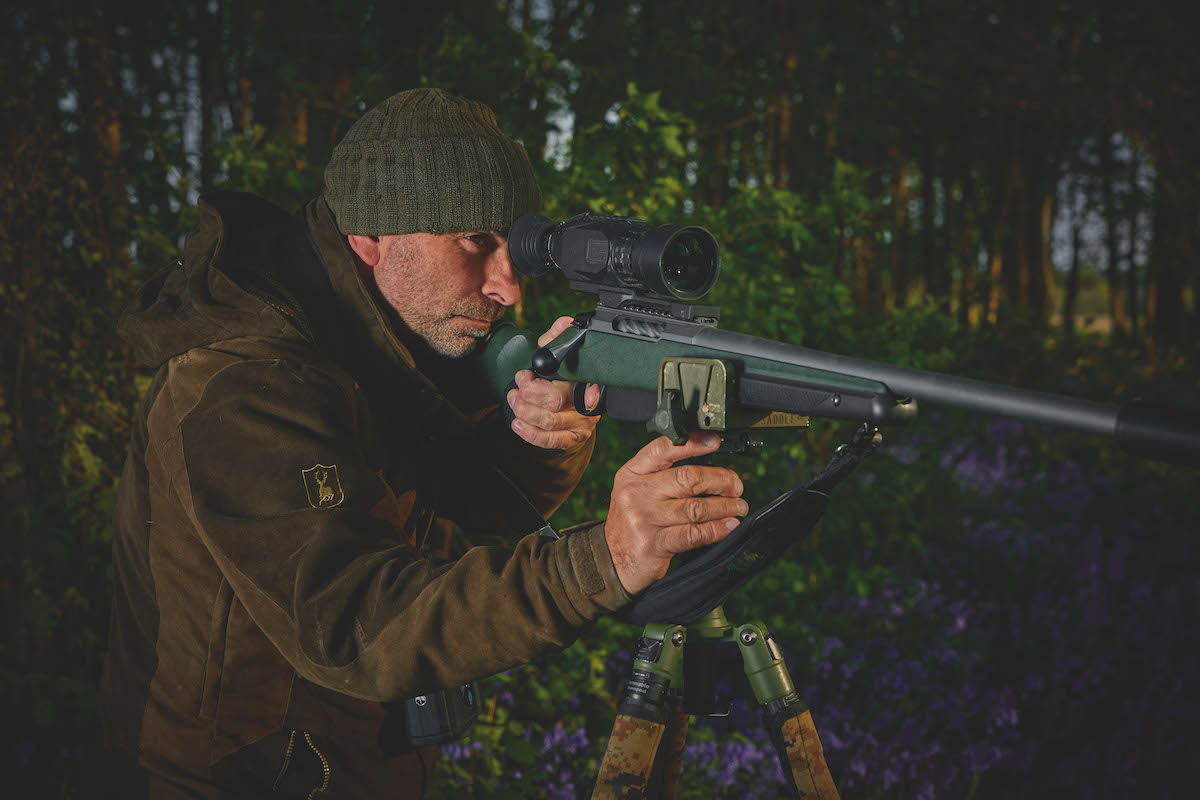How to service and store a shotgun at the end of the season
We want our guns in great condition so how should we store them, asks Richard Negus

Richard watches Adam Bragg at work
Storing a shotgun
The usual way I care for my shotguns when I put them away at the end of the game season is as follows:
Intermittently strip the gun.
Make free with gun oil, drenching ejectors and breech so they look like the aftermath of a shipping disaster
in the Straits of Hormuz.
Give the barrels a cursory glance followed by a quick pull through with a bore-snake and a liberal glug of oil.
Obvious rusty bits are soused in even more oil and the woodwork is wiped over with a handkerchief —
or jumper sleeve if closer to hand.
I then open the gun cabinet and replace the guns, barrels facing upwards, to sit in their pool of oil and await the start of the charity clay shoot season.
It turns out this is all wrong. I called my friend Adam Bragg — who refurbished the woodwork on the old AYA No 3 I bought — to ask him for advice on how to store an older gun.
Talking him through my end-of-season storing a shotgun routine, I clearly heard his tut of disapproval down the phone line. So I invited him over to show me what I should be doing; I made the tea while he stripped the Lincoln and AYA.

A light coating of oil will protect your gun
Barrel down
Keen as ever to learn, I sat beside him as he went through what we all should be doing when we put our guns away at season’s end. Then I asked him how guns should be stored — we’ve all seen them displayed in gun shops with their barrels up.
Do not do this at home. Placing your gun in the cabinet with its barrels down means any excess oil will run away from the woodwork. Store them this way and when your gun comes out of its hibernation you will not be not faced with a mess of grease and wobbly woodwork.
For the record, my Hatsan will be pressure washed at the end of February and get a squirt of 3-in-1 oil as always. It is Turkish and tough.
What you should do when storing a shotgun
- Strip the gun down into its three parts. If it is wet, mop off any moisture, particularly on the woodwork, and leave to dry.
- Spray on some solvent to degrease the action, using a cotton bud to clean all the nooks and crannies.
- Using a paint brush, apply a light film of gun oil all over the inside and outside of the action.
- Barrels should first be scrubbed with a wire bore brush. Then place a patch in your bore rod and push through until a fresh patch comes out clean. A very light smear of oil can be applied using a bore mop.
- The outside of the barrels require the lightest of oiling with a cloth.
- The fore-end requires very little attention as regards metalwork, but the woodwork will.
- If your gun’s woodwork has any mud or blood on it, particularly within the chequering, remove it with an old toothbrush.
- Scratches and small pits in the woodwork can be removed by a gentle rub with the finest grade of steel wool, working in the direction of the grain.
- Using a clean duster, rub down all of the now scratch-free woodwork.
- Apply a layer of beeswax to the woodwork. Adam used a mahogany stain wax on my Lincoln, while the AYA received a coating of clear beeswax and turps. The woodwork is then buffed with a bootbrush and rubbed over with a lint-free cloth.
- Reassemble the gun, using a cloth to hold the barrels to avoid fingerprints and the ensuing salty residue that can cause pitting.
- Finally, if the guns are to be stored for any length of time, beeswax and turps can also be lightly smeared over the metalwork too, creating a barrier against damp.
Q: I am about to take up a contract that will keep me out of the UK for over a year and, fortunately, a friend has agreed to put my two guns on his certificate and store them for me until I return. What precautions should I take against rust while my guns are in storage?
A: A thorough clean, followed by a wipe-down of the metal parts with a lightly-oiled cloth should be quite sufficient for guns in storage, providing your friend is going to examine your guns reasonably frequently. If the guns have chromed bores – and most modern guns have – there’s no need to leave the tubes internally oily. If you do leave the bores oily, then make sure the guns are stored muzzle-down, otherwise oil could run back through the firing-pin holes, and possibly dry out and gum up the mechanism and, at worst, soften the wood at the head of the stock.









